Our bird tracking data are now archived on GBIF and OBIS!
New open source workflow enables the publication of tracking data from Movebank to GBIF and OBIS.
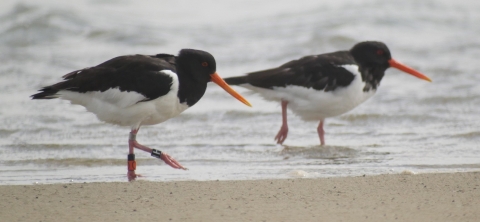
GPS trackers are increasingly being used by movement ecologists to follow the movements of a wide range of vertebrate animal species and to study their behavioral patterns. Thousands of researchers manage and share these data on Movebank, a free data platform hosting more than 7,500 animal tracking studies, many of which have made their data available for anyone to view and download.
Key words: GPS tracking, Movebank, Zenodo, GBIF, OBIS, open data, movepub
Besides detailed information about the movements of tagged animals, tracking data offer evidence of when and where species occur. Therefore, these data could be a useful source of information for a much wider scientific community invested in biodiversity research and assessments when they are made available through the open data portals Global Biodiversity Information Facility (GBIF) and Ocean Biodiversity Information Facility (OBIS). However, these platforms are not linked, and with few tracking datasets available through GBIF and OBIS, there is unmet potential for them to contribute to studies of biodiversity.
Thanks to the NLBIF funded MOVE2GBIF project, a team of researchers from Radboud University, Research Institute for Nature and Forest, Sovon, the Dutch Bryological and Lichenological Society, and the Max Planck Institute of Animal Behavior have developed an open-source workflow to publish animal tracking data stored on Movebank to GBIF and OBIS.
Technical challenge
The key challenge to sharing data between platforms is not scientific, but technical. “They store slightly different information, in different formats, with many possible ways to ‘translate’ between them,” explains the project’s lead researcher, Peter Desmet. To make it easier for researchers to prepare data from Movebank for publication in GBIF and OBIS, the researchers developed an open-source software package, “movepub”, that automatically reads data in the Movebank format and converts it to files that can be imported to GBIF and OBIS.
To offer one data transformation that can be applied to many studies and species, the researchers considered which information is most commonly collected in tracking studies, and which is most likely to be important for biodiversity research. For example, “our workflow reduces high-resolution GPS data to hourly positions per animal, in line with expected applications of those using GBIF and OBIS for their work,” describes Desmet.
The new workflow was demonstrated using tracking data from Eurasian oystercatchers (Haematopus ostralegus) collected since 2008 as part of multiple projects, primarily based in the Wadden Sea. Over more than a decade, ecologists equipped over 200 oystercatchers with GPS trackers at their breeding and wintering grounds in the Netherlands and Belgium, including 1 study in the LifeWatch GPS tracking network. The tracking data, collected using the University of Amsterdam Bird Tracking System, consist of a total of 6 million GPS locations and document oystercatchers migrating from the Netherlands to Scandinavian countries.
The new workflow and the published oystercatcher tracking data were described in a scientific article published in the journal ZooKeys.
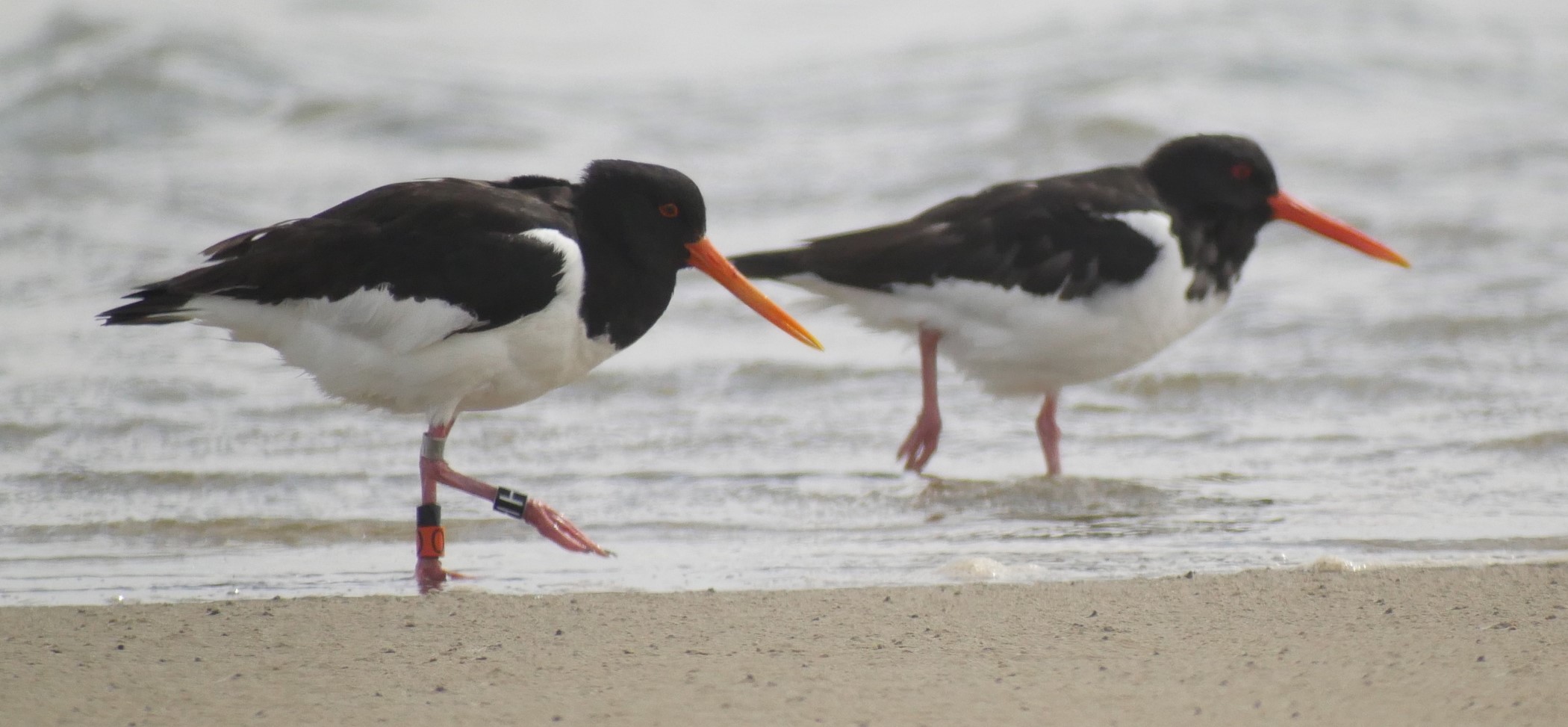
Oystercatchers (Haematopus ostralegus) on the shore, Vlieland, Netherlands—note the GPS tracker and colour rings on the individual on the left. Photo by Henk-Jan van der Kolk.
LifeWatch bird tracking datasets available on GBIF and OBIS
The workflow for the publication of tracking data from Movebank to GBIF and OBIS was compiled in the open source R package movepub. The new workflow was already used to publish all bird tracking datasets that started before 2022 in the LifeWatch GPS tracking network. By making these 10 tracking datasets available on GBIF and OBIS, we hope to build new connections between the movement ecology community and biodiversity experts. The increased access to animal tracking data will lead to the improvement of our understanding of biodiversity. As both GBIF and OBIS are used for thousands of biodiversity studies worldwide, our data have the potential to contribute to assessments, policy decisions and conservation efforts on a broad scale.

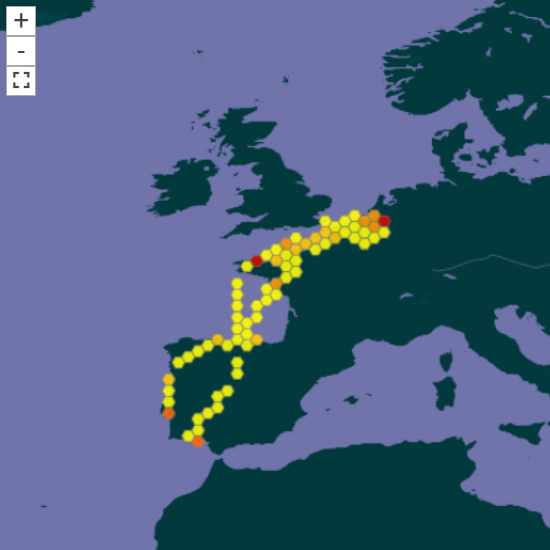
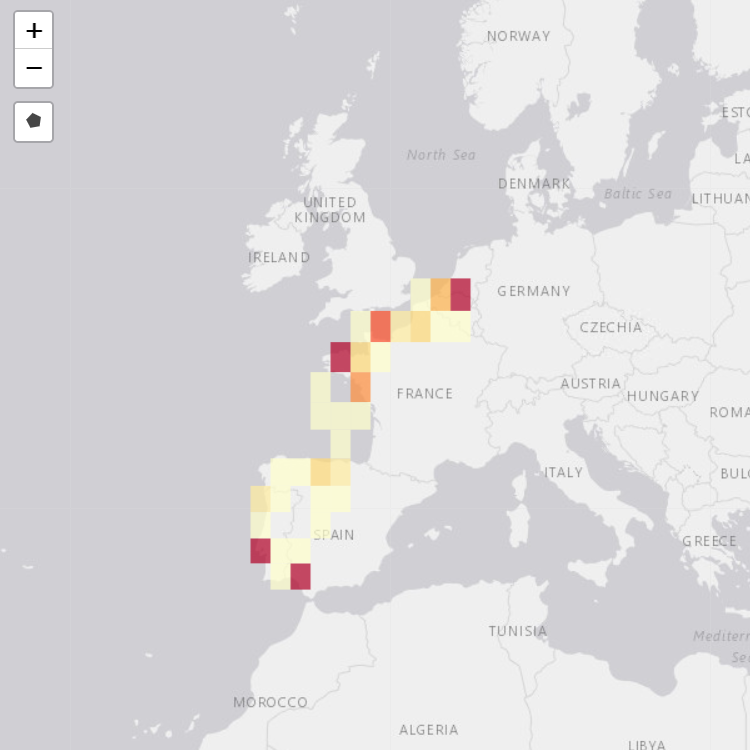
Tracks from the dataset CURLEW_VLAANDEREN - Eurasian curlews (Numenius arquata, Scolopacidae) breeding in Flanders (Belgium) dataset made available on Movebank (left), GBIF (middle) and OBIS (right).
An up-to-date list of available datasets in the LifeWatch GPS tracking network for large birds and their links to the data platforms is available on GitHub.
Animation of Lesser black-backed gull tracks from the dataset “LBBG_ZEEBRUGGE - Lesser black-backed gulls (Larus fuscus, Laridae) breeding at the southern North Sea coast (Belgium and the Netherlands)” from 2013 until 2018
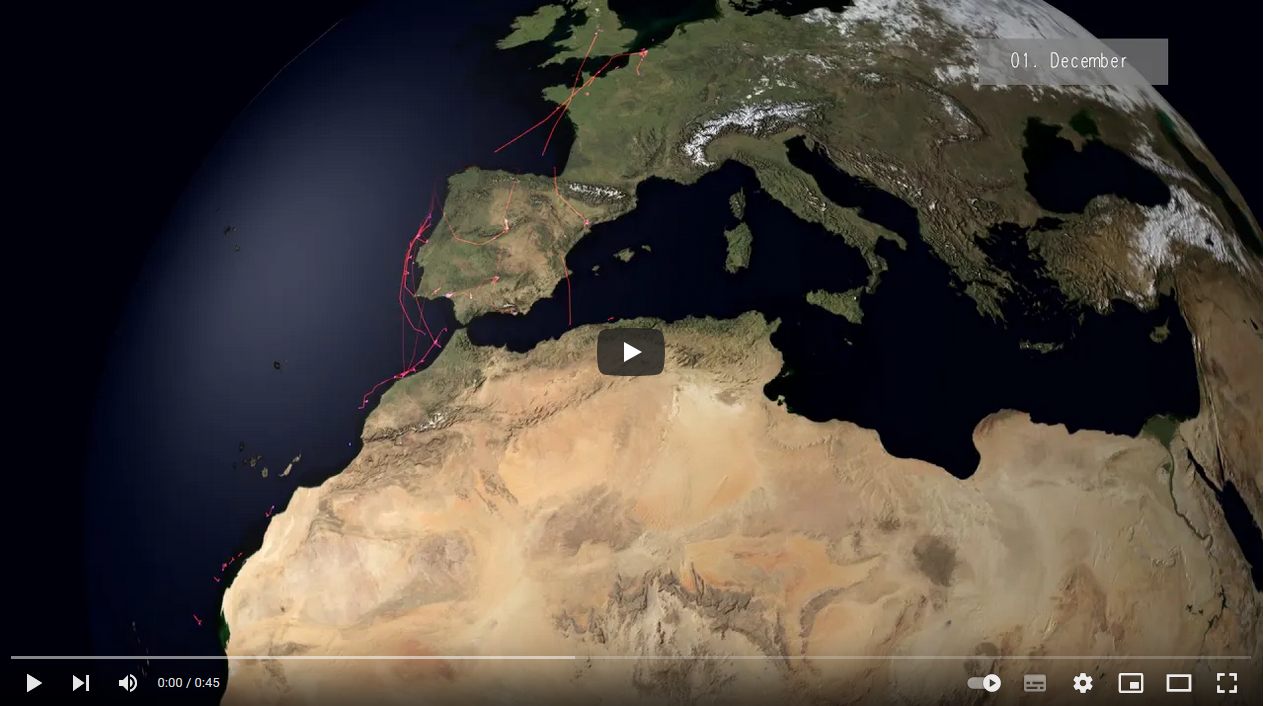
Learn more
The MOVE2GBIF project is funded by the Netherlands Biodiversity Information Facility. Further descriptions of the data and software published through this project are published at Zenodo (https://doi.org/10.5281/zenodo.7408643) and ZooKeys (https://doi.org/10.3897/zookeys.1123.90623).
An up-to-date list with published bird tracking datasets in the LifeWatch network is available on GitHub.
Key words: GPS tracking, Movebank, Zenodo, GBIF, OBIS, open data, movepub
Besides detailed information about the movements of tagged animals, tracking data offer evidence of when and where species occur. Therefore, these data could be a useful source of information for a much wider scientific community invested in biodiversity research and assessments when they are made available through the open data portals Global Biodiversity Information Facility (GBIF) and Ocean Biodiversity Information Facility (OBIS). However, these platforms are not linked, and with few tracking datasets available through GBIF and OBIS, there is unmet potential for them to contribute to studies of biodiversity.
Thanks to the NLBIF funded MOVE2GBIF project, a team of researchers from Radboud University, Research Institute for Nature and Forest, Sovon, the Dutch Bryological and Lichenological Society, and the Max Planck Institute of Animal Behavior have developed an open-source workflow to publish animal tracking data stored on Movebank to GBIF and OBIS.
Technical challenge
The key challenge to sharing data between platforms is not scientific, but technical. “They store slightly different information, in different formats, with many possible ways to ‘translate’ between them,” explains the project’s lead researcher, Peter Desmet. To make it easier for researchers to prepare data from Movebank for publication in GBIF and OBIS, the researchers developed an open-source software package, “movepub”, that automatically reads data in the Movebank format and converts it to files that can be imported to GBIF and OBIS.
To offer one data transformation that can be applied to many studies and species, the researchers considered which information is most commonly collected in tracking studies, and which is most likely to be important for biodiversity research. For example, “our workflow reduces high-resolution GPS data to hourly positions per animal, in line with expected applications of those using GBIF and OBIS for their work,” describes Desmet.
The new workflow was demonstrated using tracking data from Eurasian oystercatchers (Haematopus ostralegus) collected since 2008 as part of multiple projects, primarily based in the Wadden Sea. Over more than a decade, ecologists equipped over 200 oystercatchers with GPS trackers at their breeding and wintering grounds in the Netherlands and Belgium, including 1 study in the LifeWatch GPS tracking network. The tracking data, collected using the University of Amsterdam Bird Tracking System, consist of a total of 6 million GPS locations and document oystercatchers migrating from the Netherlands to Scandinavian countries.
The new workflow and the published oystercatcher tracking data were described in a scientific article published in the journal ZooKeys.

Oystercatchers (Haematopus ostralegus) on the shore, Vlieland, Netherlands—note the GPS tracker and colour rings on the individual on the left. Photo by Henk-Jan van der Kolk.
LifeWatch bird tracking datasets available on GBIF and OBIS
The workflow for the publication of tracking data from Movebank to GBIF and OBIS was compiled in the open source R package movepub. The new workflow was already used to publish all bird tracking datasets that started before 2022 in the LifeWatch GPS tracking network. By making these 10 tracking datasets available on GBIF and OBIS, we hope to build new connections between the movement ecology community and biodiversity experts. The increased access to animal tracking data will lead to the improvement of our understanding of biodiversity. As both GBIF and OBIS are used for thousands of biodiversity studies worldwide, our data have the potential to contribute to assessments, policy decisions and conservation efforts on a broad scale.



Tracks from the dataset CURLEW_VLAANDEREN - Eurasian curlews (Numenius arquata, Scolopacidae) breeding in Flanders (Belgium) dataset made available on Movebank (left), GBIF (middle) and OBIS (right).
An up-to-date list of available datasets in the LifeWatch GPS tracking network for large birds and their links to the data platforms is available on GitHub.
Animation of Lesser black-backed gull tracks from the dataset “LBBG_ZEEBRUGGE - Lesser black-backed gulls (Larus fuscus, Laridae) breeding at the southern North Sea coast (Belgium and the Netherlands)” from 2013 until 2018
Learn more
The MOVE2GBIF project is funded by the Netherlands Biodiversity Information Facility. Further descriptions of the data and software published through this project are published at Zenodo (https://doi.org/10.5281/zenodo.7408643) and ZooKeys (https://doi.org/10.3897/zookeys.1123.90623).
An up-to-date list with published bird tracking datasets in the LifeWatch network is available on GitHub.



